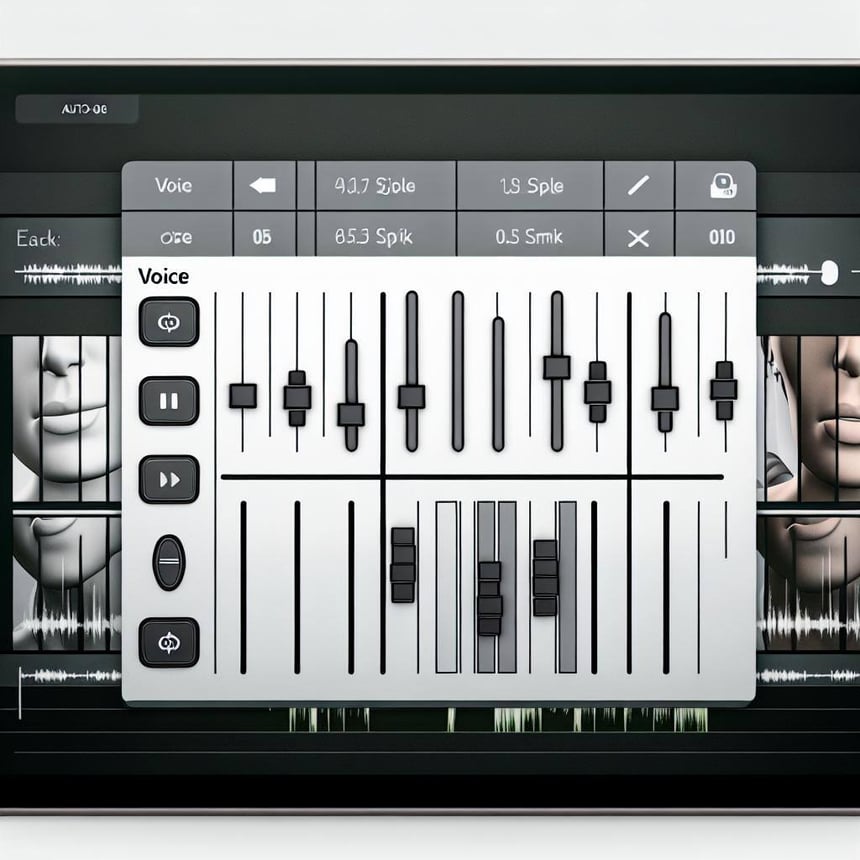Understanding auto-generated voices
Auto-generated voices are computer-generated voices that can be used in various applications, including YouTube videos. These voices are created using text-to-speech technology, which converts written text into spoken words. With auto-generated voices, content creators can easily add narration or dialogue to their videos without the need for a human voice actor.
Auto-generated voices are available in different languages and accents, allowing creators to cater to a diverse audience. They can be used in various video genres, such as tutorials, vlogs, and animations. However, it is important to note that the quality of auto-generated voices may vary depending on the software or platform used.
Benefits of using auto-generated voices in YouTube videos
Using auto-generated voices in YouTube videos offers several benefits for content creators. Firstly, it saves time and effort, as there is no need to hire a voice actor or record voiceovers manually. This can be especially useful for creators who produce a large volume of videos or regularly update their content.
Auto-generated voices also provide consistency in audio quality. Human voice actors may have variations in tone, pronunciation, or accents, which can affect the overall coherence of a video series. With auto-generated voices, creators can ensure a uniform listening experience for their viewers.
Additionally, auto-generated voices can be customized to match the tone or style of a video. Creators can choose from different voice options, such as male or female voices, and adjust parameters like pitch and speed. This allows for more creative control and the ability to tailor the voice to the specific needs of the video.
Challenges and limitations
While auto-generated voices offer convenience and customization options, they also have some limitations. One of the main challenges is the lack of naturalness in the voice. Although advancements in text-to-speech technology have improved the quality of auto-generated voices, they may still sound robotic or artificial to some listeners.
Moreover, auto-generated voices may struggle with complex pronunciations or specific accents, especially for languages that are less commonly supported. This can result in mispronunciations or inaccuracies in the narration, which can be distracting for viewers.
Another limitation is the limited emotional range of auto-generated voices. While some platforms provide options for adjusting the tone or expression of the voice, it may still be challenging to convey nuanced emotions or deliver lines with the same level of depth as a human voice actor.
Lastly, it is important to consider copyright and licensing issues when using auto-generated voices. Some platforms may have restrictions on using their text-to-speech technology for commercial purposes, so creators should ensure that they have the necessary permissions or licenses to monetize their videos.
Tips for monetizing videos with auto-generated voices
When it comes to monetizing videos with auto-generated voices, there are a few strategies that creators can consider. Firstly, it is important to focus on creating valuable and engaging content that resonates with the target audience. This can include providing informative or entertaining videos that address popular topics or offer unique perspectives.
Creators can also optimize their videos for search engines by using relevant keywords in the video title, description, and tags. This can help increase the visibility of the videos and attract more viewers, which can ultimately lead to higher monetization potential.
Additionally, creators should explore different monetization options available on YouTube, such as joining the YouTube Partner Program or utilizing sponsorships and brand deals. It is important to comply with YouTube's monetization policies and guidelines to ensure eligibility for monetization.
Furthermore, engaging with the audience through comments, likes, and shares can help build a loyal fan base and increase the chances of video monetization. Creating a strong online presence and promoting the videos through social media channels can also contribute to the success of monetization efforts.
Best practices for creating engaging content
To create engaging content with auto-generated voices, content creators should consider the following best practices:
- Write a compelling script: A well-written script is essential for maintaining viewer interest. It should be concise, clear, and engaging, with a logical flow of information or storytelling.
- Use appropriate pacing and intonation: Auto-generated voices may lack natural expressiveness, so creators should pay attention to the pacing and intonation of the narration. Adding pauses, emphasizing certain words, or adjusting the speed can help make the voice sound more engaging.
- Incorporate visuals and graphics: Visual elements can enhance the viewer's experience and make the video more engaging. Creators can use relevant images, animations, or text overlays to complement the audio narration.
- Edit and fine-tune the audio: After generating the voiceover, creators should carefully review and edit the audio to ensure clarity and coherence. Removing any background noise or adjusting the volume levels can significantly improve the quality of the video.
- Test and gather feedback: Before publishing the video, it is recommended to test the audio quality and overall viewer experience. Gathering feedback from trusted sources or the target audience can provide valuable insights for further improvement.
By following these best practices, content creators can maximize the potential of using auto-generated voices and create engaging videos that resonate with their audience.



.jpg)






.jpg)



0 Comments